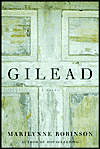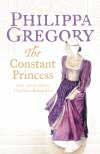 Small Island
Small IslandAndrea Levy
439 pages
"We Jamaicans, knowing our island is one of the largest in the Caribbean, think ourselves sophisticated men of the world. Better than the 'small islanders' whose universe only runs a few miles in either direction before it runs into the sea." (p. 110)
Set during and immediately after World War II, Small Island tells the story of four main characters: Gilbert Joseph, a a Jamaican man recently returned from active duty in World War II; Hortense, his young wife; Queenie, a young English woman whose husband disappeared during the war; and Bernard, Queenie's husband. The setting moves between two time periods: 1948, and "before," and two settings: Jamaica and England. Each chapter is told from a single character's point of view. This produces a rich, character-driven novel that also brilliantly exposes issues of race, culture, and class. The title at first appears to refer to Jamaica, but quickly becomes synonymous with "small-mindedness" on both of the small islands in the story.
By moving between time periods and points of view, Levy reveals connections between the characters' lives, some of which the characters themselves are unaware of. The plot includes many surprising twists, and I do not want to reveal much in this review. For me, the characters made the novel. I especially liked the strong female protagonists, Hortense and Queenie. Hortense, recently arrived from Jamaica, joins Gilbert as a lodger in Queenie's house. She is young and naive, with high expectations that are dashed when she sees where Gilbert lives, and when she encounters certain realities about being a Jamaican woman living in England in 1948. Queenie has transformed from young wife to independent woman and, being unusually open-minded on issues of race, has made a living renting rooms primarily to "coloureds." She refuses to give in to her neighbors' objections, which leaves her somewhat isolated in her community. She remains strong while also fighting the loneliness of having lost her husband. Bernard's sudden reappearance upsets Queenie's comfortable routine and challenges the relationships she has forged in his absence. The bonds between Queenie, Hortense, Gilbert, and Bernard are strengthened in surprising ways as the novel reaches its climax.
Highly recommended.
My original review can be found here.
 )
) The Blood of Flowers
The Blood of Flowers )
)
